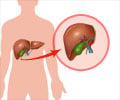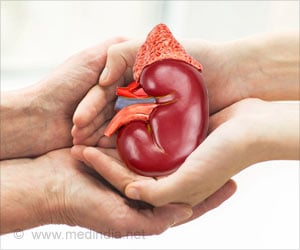STANFORD, Calif. — Heart transplant recipients and their physicians are likely more concerned with the function of the donated organ than with the donor's DNA sequences that tag along

The finding implies that a simple blood draw may soon replace the regular surgical biopsies that are currently used to track the health of the donor heart. Closely tracking the dynamics of this concurrent "genome transplant" may also allow doctors to avoid the use of high doses of medication required to combat more advanced cases of rejection.
"Heart transplant recipients undergo at least 12 tissue biopsies during the first year after their transplant and two or three each year for about four additional years," said Hannah Valantine, MD, professor of cardiovascular medicine. "Signs of rejection are treated aggressively with large doses of corticosteroids, which can themselves have side effects including diabetes, hypertension and renal problems. The idea that we might now be able to diagnose rejection earlier and noninvasively is very, very exciting."
"This approach, which we call genome transplant dynamics, or GTD, solves a long-standing problem in cardiac transplantation," said Stephen Quake, PhD, who developed the sequencing technology used in the study. "It's so difficult to find and implant a donor heart, and then doctors have to remove pieces of it every few months to test for rejection." Quake is the Lee Otterson Professor of Bioengineering in Stanford's schools of Medicine and of Engineering.
In 2010, Valantine pioneered the first blood test to diagnose organ rejection. That test, called the AlloMap, relies on the expression profile of 20 genes in a patient's blood sample to determine whether the body has launched an attack on the donated organ. In contrast, this new technique uses advanced genome-sequencing technology developed by Quake to measure levels of donor DNA released when cells in the transplanted heart are damaged as occurs early in the rejection process.
The researchers believe using the two methods in tandem will allow the noninvasive monitoring of the health of many transplanted organs, including hearts, lungs and kidneys.
Advertisement
The current study began when Valantine noticed research by Quake in 2008 showing that it is possible to detect fetal chromosomal abnormalities by sequencing cell-free DNA fragments in a maternal blood sample.
Advertisement
"Hannah sought me out and I realized that an organ transplant can also be thought of as a genome transplant," said Quake. "Someone else's genome is in your body. So by looking at variations in the DNA sequence, we can identify which DNA segments come from the new heart, and which come from you."
But it can be tricky. Although every human is unique, the actual sequence of much of our DNA varies very little (about one genetic "letter" per 1,000). And because we each have two copies of nearly every gene, the more common variations (called polymorphisms) can vary within as well as among individuals.
Past efforts to pick out donor DNA have hinged on one easily identifiable difference — the presence of the male Y chromosome in the blood of female transplant recipients.
Snyder used a sophisticated sequencing technique developed by Quake called microfluidic digital PCR to confirm that he could identify the presence of the Y chromosome in stored blood samples from three out of nine women who had received, and then rejected, a heart from a male donor (the other six had received a heart from a female donor). These and other archived samples had been collected at the time of biopsy during a previous study by Valantine.
"Every time they had a biopsy, we also collected blood," said Valantine. "We kept meticulous clinical records, so we knew a lot about these patients."
A larger study of 39 samples from women with male hearts showed that the prevalence of the Y chromosome in the recipient's blood increased significantly (from a norm of about 0.5 percent of the total, up to 8 percent) during episodes of rejection identified by Khush through meticulous review of each patient's clinical records.
However, the pairing of female recipients and male donors accounts for less than one-quarter of organ transplants. Snyder wanted to make the results useful regardless of the gender of the donor and recipient. He reasoned that it would be easiest to pick out donor DNA from polymorphic sequences at which the recipient's two copies did not differ, but where at least one of the donor's genes varied. To test his idea, he mixed reference DNA from two unrelated people in proportions varying from zero to 7.5 percent, designating one as the donor and one as a recipient. He was able to show that the sequencing approach could accurately identify the minute proportions of "donor" DNA in each sample. Following this proof of principle, Snyder and Khush applied the sequencing technique to three women who had received hearts from male donors, two of whom experienced episodes of rejection and one who did not, as well as four men who received hearts from male donors, who had all experienced rejection.
"The results were absolutely confirmatory," said Valantine. "In every case we could see an increase in donor DNA in the patient's blood before the biopsy itself showed any sign of rejection." Rejection episodes corresponded to levels of donor DNA approaching 3-4 percent; when the patients were successfully treated with immunosuppressants, the amount of the donor DNA in the blood decreased to less than 1 percent of total free DNA.
"For the first time, we can now use cell-free DNA for practical diagnostic questions in organ transplantation," said Quake, who noted that the technique is likely to be applicable to many other organs.
Quake, Valantine and Snyder have filed a patent for use of the technique. Before the test can be routinely used, the researchers plan to conduct a prospective study in which participants will be identified and then tracked over time. They recently received a three-year, $2 million grant from the National Institutes of Health for prospective studies to diagnose acute rejection of heart and lung transplants.
Source-Eurekalert













